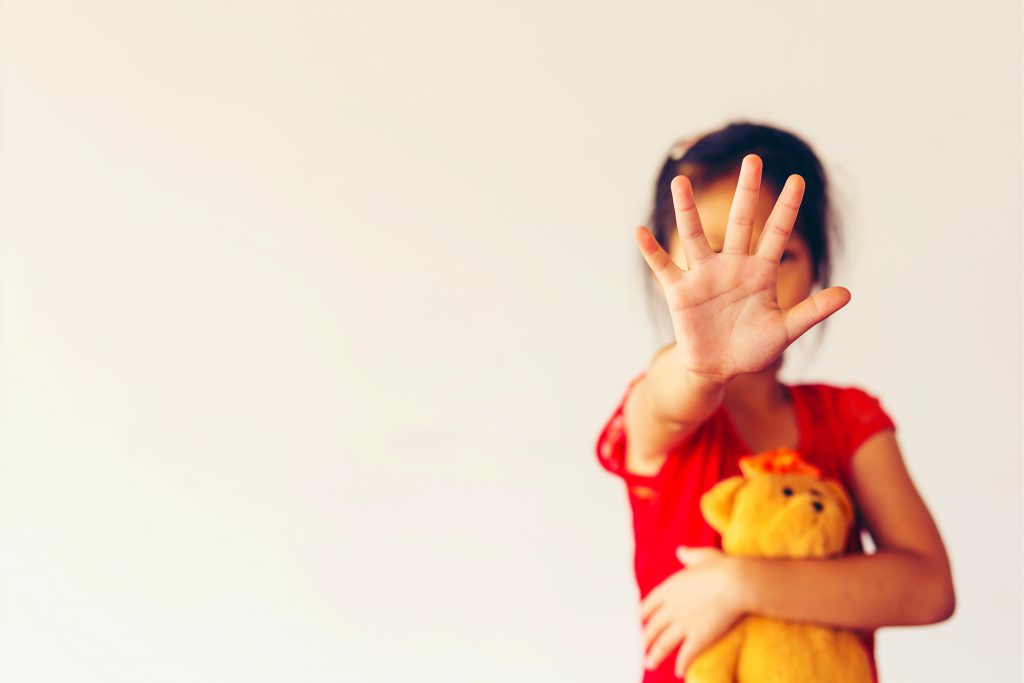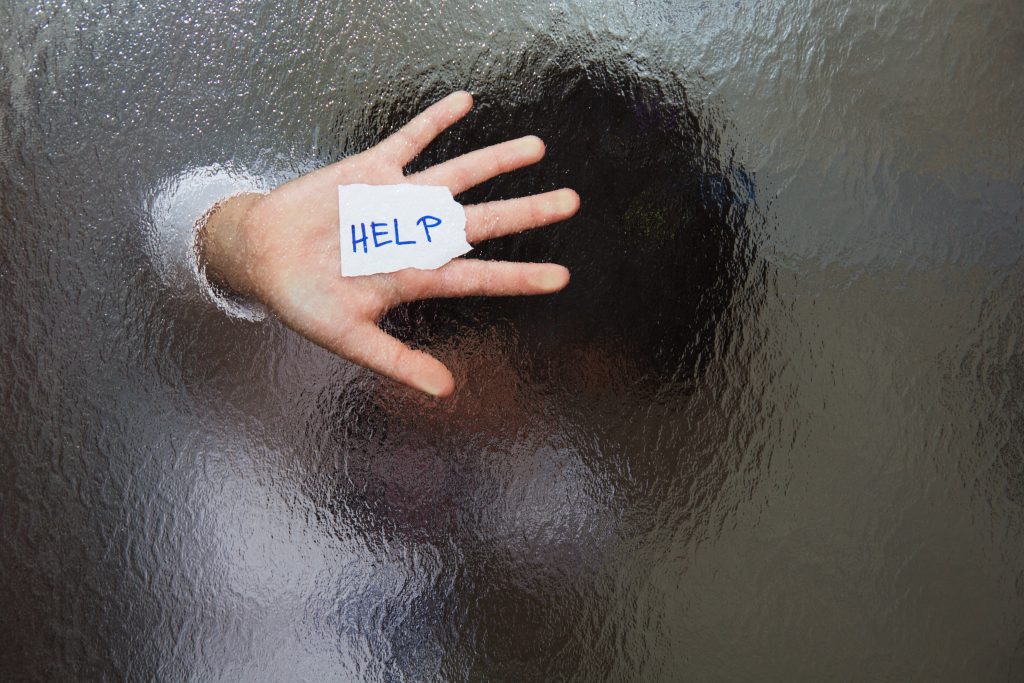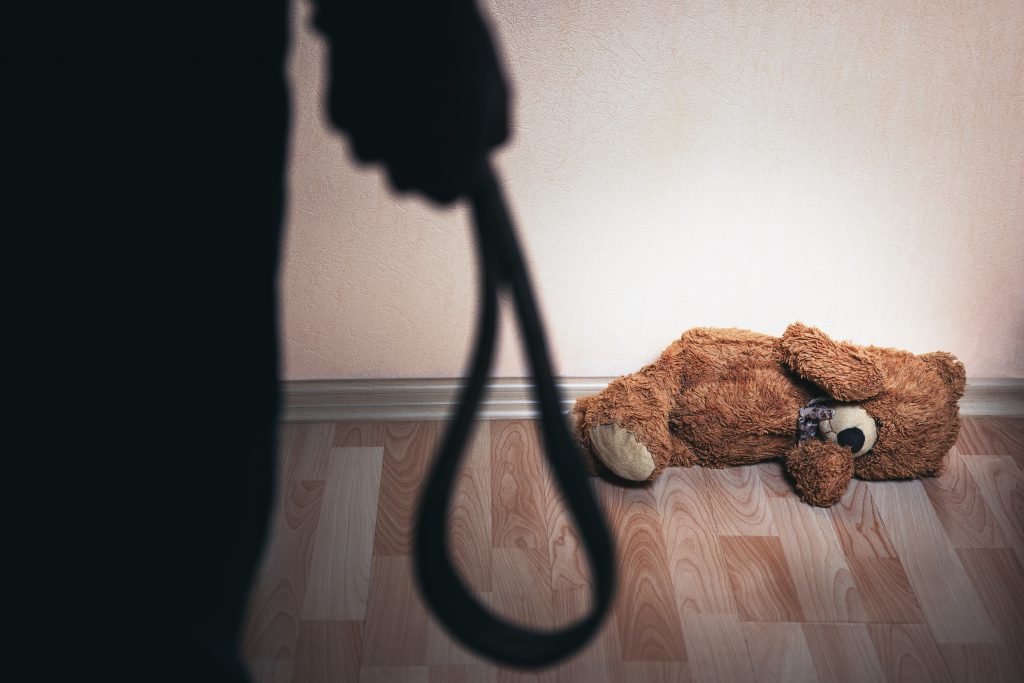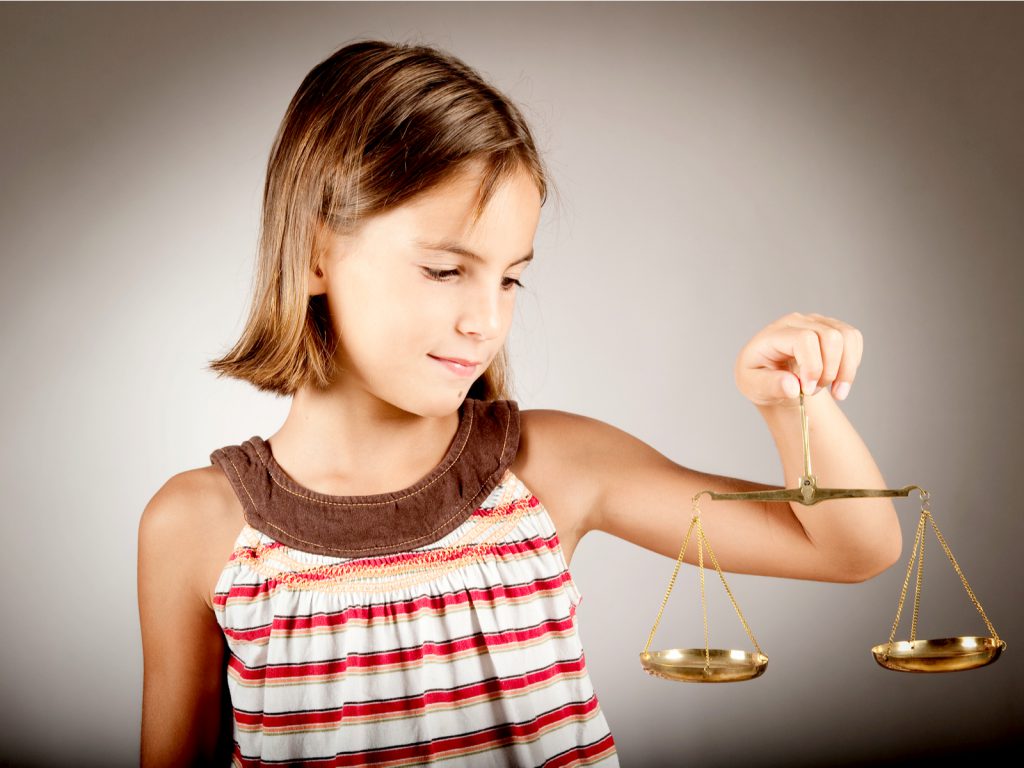Children across the world frequently face heinous forms of violence, exploitation and abuse. Unfortunately, child abuse reaches every corner of the world, often occurring in places and areas where children should be most protected: within households, at schools and online. This abuse is commonly perpetrated by people who have gained children’s trust. All children have the right to be protected from violence, exploitation and abuse.

Defining child abuse
Child abuse is defined as any intentionally harmful action(s) carried out on a child under the age of 18 by either an adult or another child. This definition encompassess all types and forms of physical and emotional ill-treatment, which lead to actual or potential harm to a child’s “health, survival, development or dignity in the context of a relationship of responsibility, trust or power” (WHO). Incidences of abuse may be isolated or prolonged over a period of time. As children grow and develop, they are at greater risk of different forms of abuse (WHO, 2020).
Identifying the different forms of child abuse
Abusive behaviour towards children can manifest itself in many different ways, accordingly, there are multiple forms of child abuse including:
- Bullying and cyberbullying
- Child sexual exploitation (CSE)
- Child trafficking
- Child criminal exploitation and gangs
- Domestic abuse
- Emotional abuse
- Female genital mutilation/cutting (FGM/C)
- Grooming
- Child neglect
- Physical abuse
- Sexual abuse
- Non-recent abuse
- Medical abuse
Risk factors of child abuse
Child abuse is often, though not always, detectable. However, the factors which increase the risk of child abuse are frequently more difficult to detect. There are four different categories of risk factors that may increase the likelihood that a child faces abuse, neglect or maltreatment. These four categories of vulnerability relate to: the child themselves, parents and caregivers, relationship dynamics and societal factors. Under no circumstances is a victim of child abuse responsible for the harm they suffer – “Children who are abused are never to blame” (WHO, 2020).
- The characteristics that may cause a child to be abused include but are not limited to: the child being under the age of four, the child being unwanted by their parents or failing to meet their parents expectations, the child requiring special needs or bearing a physical/neurological disability, the child identifying as LGBTQIA+ (WHO, 2020).
- The characteristics of a parent/caregiver that may indicate a greater risk of child abuse include but are not limited to: misuse of drugs and alcohol, low self-esteem, history of personal abuse or mistreatment as children, mental health challenges, involvement in criminal activity, financial difficulties, challenges bonding with the child from birth, lack of awareness on child development, unrealistic expectations of the child and poor impulse control (WHO, 2020).
- The characteristics of the relationship amongst family or household members that may increase the risk of a child being abused include but are not limited to: domestic abuse/violence that is prevalent within the home, the family lacking a good support network or a breakdown in support from extended family or the local community (WHO, 2020).
- The characteristics of societal factors that may increase a child’s risk of being abused include but are not limited to: easily accessible drugs and alcohol, lack of family/community support and inadequate housing and poor living standards, poverty and unemployment, social and gender inequalities, societal rule and norms which support the use of corporal punishment, rigid gender roles or the promotion/glorification of violence towards others (WHO, 2020).
How to recognize signs of child abuse – identifying ‘red’ flags

The warning signs for child abuse are not always obvious and being able to identify and recognize indications of a problem can save a child’s life. Due to the varying forms of child abuse, the signs of abuse may manifest in different forms (Smith, Robinson, Segal, 2020). Characteristics such as self-harm, defiant behaviour, attempted suicide, absence from school, social withdrawal from friends/family or social activities, a drastic change in performance at school or in extracurricular activities, a change in behaviour, aggression, anger, hostility or hyperactivity, are a few examples of visible ‘red flags’ which might point towards abuse (Santos & Holland, 2018).
The effects of child abuse on childhood and child development
Child abuse can have long-lasting impacts on children that follow them into adulthood. Although not all effects of child abuse are physical; the emotional, psychological, behavioural and cognitive effects can also have damaging effects on children’s self-worth, self-esteem, education, future relationships and work (Smith, Robinson, Segal, 2020). The consequences of child abuse are often intergenerational, as those who fall victim of abuse are more likely to cause harm to others in the future. Cognisant of this fact, interventions seeking to prevent child abuse must work to break long-standing cycles of abuse and exploitation (WHO, 2020). Below, the effects of child abuse on child development will be categorised into physical, psychological, cognitive and behavioural effects.
The physical effects of child abuse can range from injuries, stunted growth (height and weight), skin markings or scars, sexually transmitted diseases (STDs), severe brain damage or death (National Research Council, 1993).
The psychological effects of child abuse include a lack of trust and difficulty forming relationships, heightened feelings of ¨worthlessness¨, difficulty understanding emotions, feelings of anxiety, depression, anger or rage, feelings of numbness (Smith, Robinson, Segal, 2020).
The cognitive effects of child abuse include learning disabilities, delayed intellectual development and affected academic performance (National Research Council, 1993).
The behavioural effects of child abuse include violent and deviant behaviour, difficulty forming close relationships, emotional instability and heightened sexuality in children who have been sexually abused (National Research Council, 1993).
Corporal punishment
The United Nations Committee on the Rights of the Child defines corporal punishment as ¨any punishment in which physical force is used and intended to cause some degree of pain or discomfort, however light”. Most corporal punishment involves hitting (“smacking”, “slapping”, “spanking”) children, with the hand or with an implement: a whip, stick, belt, shoe, wooden spoon, etc. However, this form of abuse can also involve, for example, kicking, shaking or throwing children, scratching, pinching, biting, pulling hair or boxing ears, caning, forcing children to stay in uncomfortable positions, burning, scalding, or forced ingestion¨ (United Nations Committee on the Rights of the Child, 2011).

Corporal punishment “is the most widespread form of violence against children.” (Council of Europe). Bringing an end to corporal punishment will assist in working towards the United Nation´s Sustainable Development Goals (SDGs) target 16.2 in ending violence against children (Global Coalition to End All Corporal Punishment of Children, 2018). The use of corporal punishment violates various children´s rights such as the right to respect their human dignity, right to physical integrity, right to health and education, freedom from tortute and inhuman or degrading treatment and the right to development (Global Coalition to End All Corporal Punishment of Children, 2018).
The use of corporal punishment is the most widespread form of violance against children globally and prohibiting its use would have a positive impact on reducing other forms of violence against children. The use of corporal punishment has been found to have negative health and behavioural impacts on children such as poor mental health and cognitive development, antisocial behaviour and increased aggression (Global Coalition to End All Corporal Punishment of Children, 2018).
Globally, there are different and opposing approaches to corporal punishment whereby some see it as having a harmful affect on a child´s development and others view it as a form of discipline that teaches children respect (Howard, 2018).
Under international human rights law, countries are obliged to prohibit all forms of corporal punishment, including in a home setting. This international obligation is set out by the UN Committee on the Rights of the Child under General Comment No. 8 on the right of the child to protection from corporal punishment and other cruel or degrading forms of punishment (Global Coalition to End All Corporal Punishment of Children, 2018).
Corporal punishment is most prevalent in two settings which include:
- Corporal punishment in the home/family setting
- Corporal punishment in schools
As of 2020, globally, 58 countries have prohibited corporal punishment and 67 countries have not prohibited corporal punishment in schools. Sixteen countries do not fully prohibit it in any setting including as a sentence for crime. In 31 countries it is still lawful under state, religious and/or traditional law as a sentence for crimes that are committed by juveniles (Global Coalition to End All Corporal Punishment of Children, 2018).
Regional laws and prohibitions vary on corporal punishment. In East and Southern Africa, as of June 2020, 3 countries (Kenya, Seychelles and South Africa) have prohibited the use of corporal punishment in all settings and a further 4 countries have expressed commitment towards a full prohibition (Global Coalition to End All Corporal Punishment of Children, 2020). In South Asia, as of January 2020, Nepal is the only country that has prohibited corporal punishment in all settings. Sri Lanka has commited to prohibit it as a sentence for a crime but has not prohibited it in any settings.
Across East Asia and the Pacific, countries such as Japan, Mongolia, New Zealand and South Korea have committed to a full prohibition of corporal punishment. As of January 2020, 36 countries across Europe and Central Asia have committed to a full prohibition on corporal punishment (Global Coalition to End All Corporal Punishment of Children, 2021).
The Middle East and North Africa, also known as the MENA region, have some of the highest rates of corporal punishment in the world. In a survey conducted by Human Rights Watch, it was found that 90% of children in the region suffer from corporal punishment. A majority of the countries within the MENA region lack legislation and policies to end corporal punishment whilst some countries explicity permit the use of corporal punishment (Human Rights Watch, 2021).
Child abuse prevalence and global statistics
According to the World Health Organization (WHO), approximately 300 million children between the ages of 2-4 years old suffer physical punishment and emotional abuse at the hands of their parents/caregivers. 1 in 13 men and 1 in 5 women report being sexually abused as children between the ages of 0-1. Globally, approximately 120 million young women and girls below the age of 20 have suffered from some form of sexual abuse (WHO, 2020).
Reporting mechanisms and prevention
As child abuse is a multifaceted problem, in order to prevent it, a multisectoral approach is required. The following non-exhaustive list outlines a series of interventions which have been recommended by the World Health Organization (WHO, 2020).
- Greater support to parents and caregivers to reinforce healthy parenting strategies. This support should be provided by qualified and trained professionals within community settings.
- Greater focus on education. Prioritizing children’s right to education builds resilience within young people and reduces their own child abuse risk factors. Further, schools should provide a safe and violence-free environment to catalyse children’s healthy development.
- Greater educational focus around sexual abuse and exploitation. Children require increased support to upscale their understanding of consent and the right to privacy, as well as their knowledge of how to access help and support.
- Greater focus on cultural norms and values. Programmes and initiatives must work to protect children against community and societal norms which violate children’s fundamental human rights and expose them to harm.
- Greater emphasis on legislative reform and law enforcement. Corporal punishment must be outlawed, alongside other acts which subject children to harm, and these laws must be enforced to protect children from sexual abuse and exploitation.
- Greater focus on response and support services. The earlier a potential case of child abuse is recognised, the easier it is to prevent and mitigate harm. Communities must work to identify child abuse as early as possible and provide care to child victims.
WHO has further established seven strategies in order to end violence against children: INSPIRE (WHO, 2016).
- Implementation and enforcement of laws
- Norms and values
- Safe environments
- Parent and caregiver support
- Income and economic strengthening
- Response and support services
- Education and life skills
Key documents and international legal instruments

There are various international legal instruments that recognize and respond to child abuse. In particular:
- Convention on the Rights of the Child (CRC)
- Optional Protocol to the Convention on the Rights of the Child on the sale of children, child prostitution and child pornography (OPSC)
- Optional Protocol to the Convention on the Rights of the Child on the involvement of children in armed conflict (OPAC)
- Protocol to Prevent, Suppress and Punish Trafficking in Persons Especially Women and Children, supplementing the United Nations Convention against Transnational Organized Crime (Palermo Protocol)
- Convention against Torture and other Cruel, Inhuman or Degrading Treatment or Punishment (CAT)
- Council of Europe Cybercrime Convention (Budapest Convention)
- Council of Europe Convention on the Protection of Children against Sexual Exploitation and Sexual Abuse (Lanzarote Convention)
- Council of Europe Recommendation No. R(80)4 on violence in the family
- Council of Europe Recommendation No. R(90) on social measures concerning violence within the family
- Council of Europe Recommendation No. R(93)2 on the medico-legal aspects of child abuse
- General Comment No. 14 (2013) on the right of the child to have his or her best interests taken as a primary consideration (Article 3, para 1)
- General Comment No. 13 (2011) on the rights of the child to freedom from all forms of violence (Article 19)
- General Comment No. 12 (2009) on the rights of the child to be heard
- General Comment No. 15 (2013) on the rights of the child to the enjoyment of the highest attainable standard of health (Article 24)
- General Comment No. 9 (2006) on the rights of children with disabilities
- African Charter on the Rights and Welfare of the Child
- Declaration on the Commitments for Children in ASEAN
Written by Vanessa Cezarita Cordeiro
Last updated on 25 June 2021
References:
American Academy of Child & Adolescent Psychiatry. (2018, March). “Physical punishment.”
Council of Europe. ¨Corporal Punishment.¨
Greydanus, D.MD, Pratt, H.PhD, Spates, R.PhD., Blake-Dreher, A.PhD., Greydanus-Gearhart, M.A., Patel, D.MD. (2003, May 1). “Corporal punishment in schools.” Journal of Adolescent Health. Vol, 32 (5).
Global Initiative to End all Corporal Punishment of Children. (2018). ¨Global Progress.¨
Howard, J. (2018, March 13). ¨These are the countries where spanking is illegal.¨
Human Rights Watch. (2021, May 10). ¨Middle East/North Africa: End violent punishment of children.¨
Hunter, C., Lamont, A. (2014, January). ¨Effects of child abuse and neglect for adult survivors.¨
Mayo Clinic. (2018, October 5). ¨Child abuse.¨
Morin, A., Chung, A. (2020, August 7). “Facts about corporal punishment.”
National Research Council. (1993). Consequences of child abuse and neglect. Understanding child abuse and neglect. Washington DC: The National Academies Press.
Queensland Government. (2018, March 21). ¨What causes child abuse.¨
Santos, M., Holland, K. (2018, December 3). ¨Understanding the causes of child abuse.¨
Smith, M. Robinson, L. Segal, J. (2020, November). ¨Child abuse and neglect.¨
Stirling, J., Amaya-Jackson, L. (2008, September). ¨Understanding the behavioral and emotional consequences of child abuse.¨ American Academy of Pediatrics. Vol, 122 (3).
The Whole Child. (2018, November 24). ¨How to identify child abuse ages 0-5.¨
UNICEF. (2020, September 3). ¨Child protection.¨
Utter, M. (2019). ¨Opposing viewpoints: Corporal punishment in the home and its affects on children.¨ Children’s Legal Rights Journal. Vol, 39 (3).
WHO. ¨Violence against children.¨
WHO. (2016, October 26). ¨INSPIRE: Seven strategies for ending violence against children.¨

